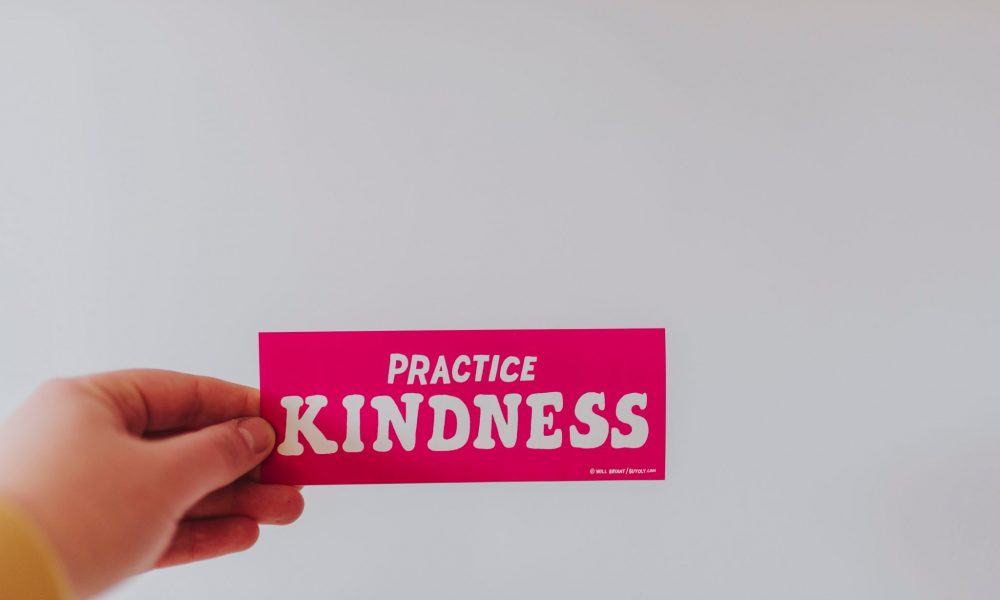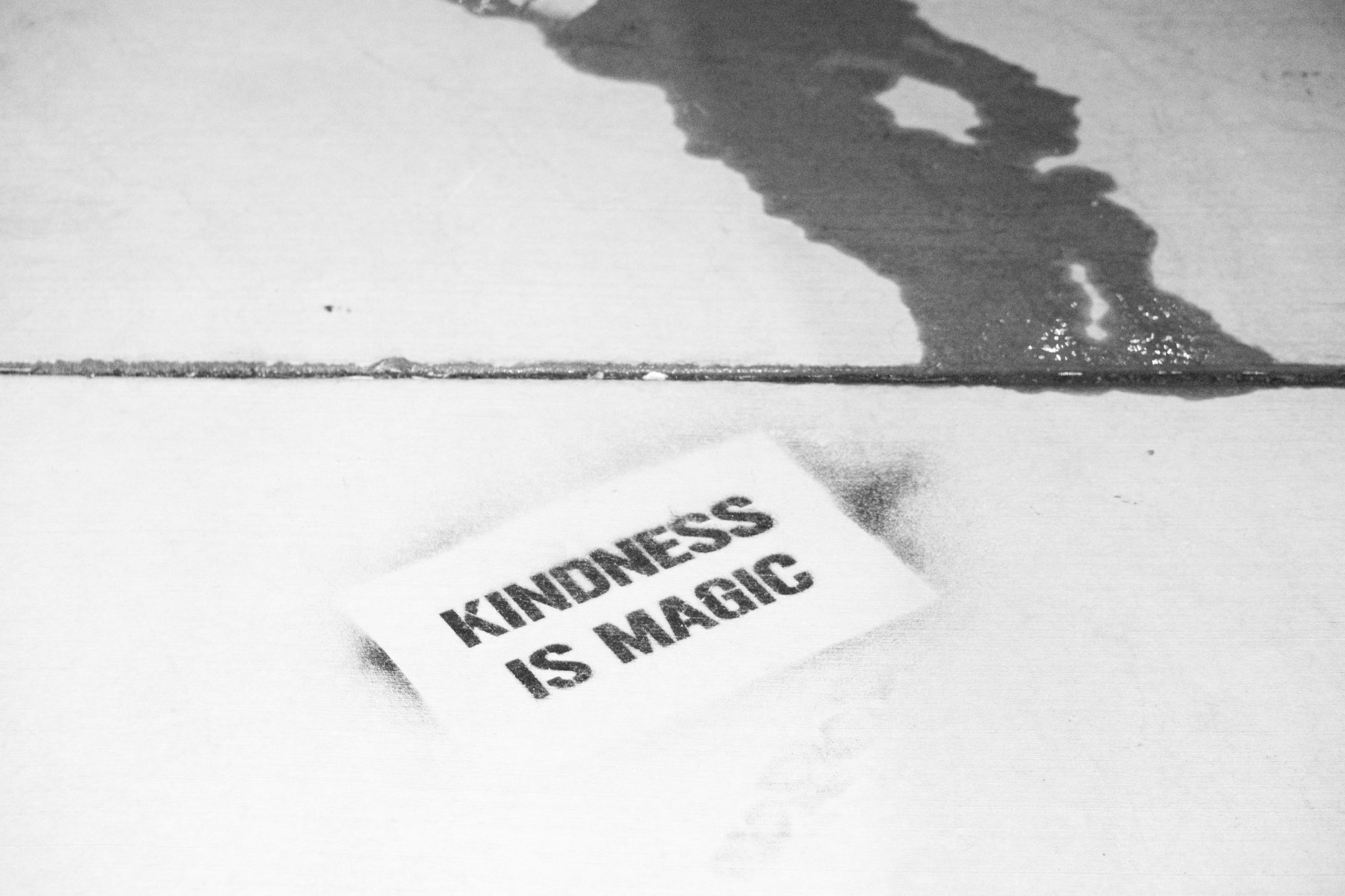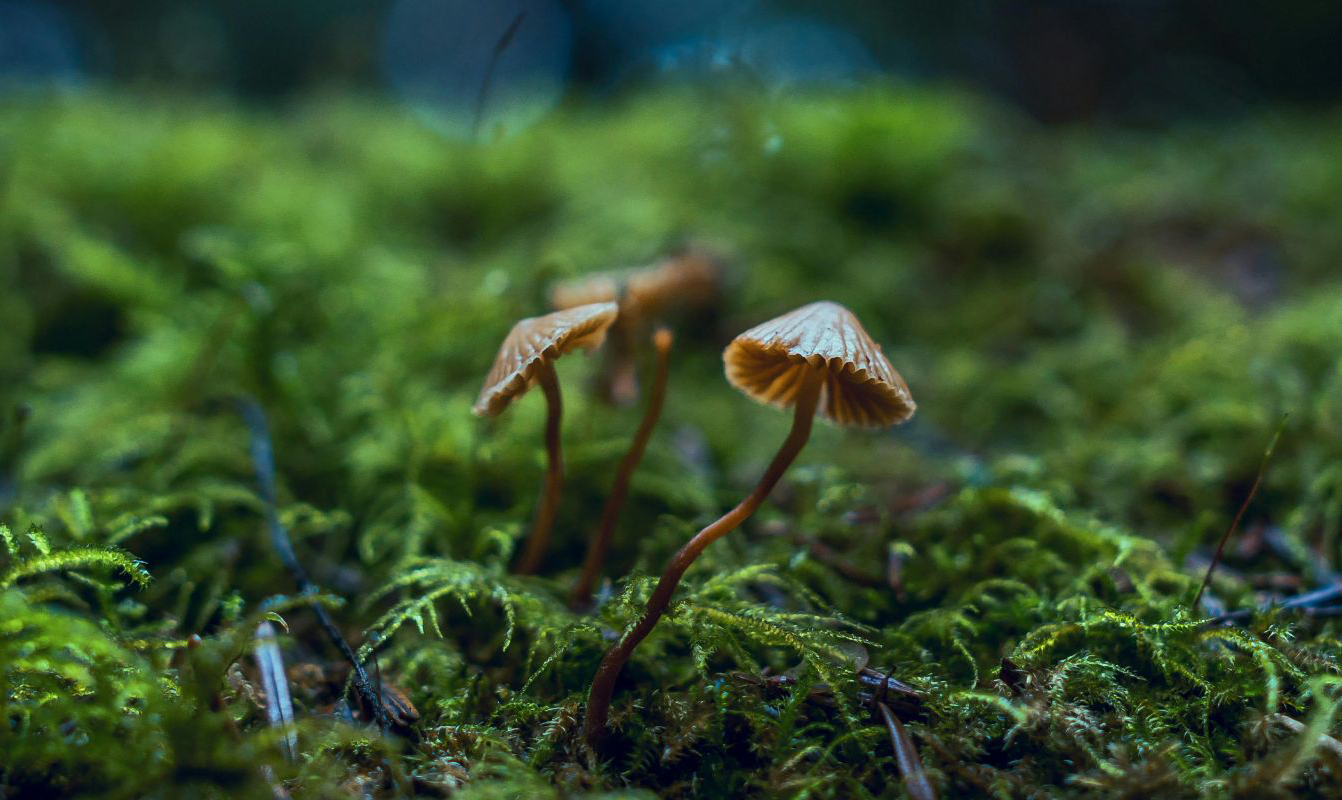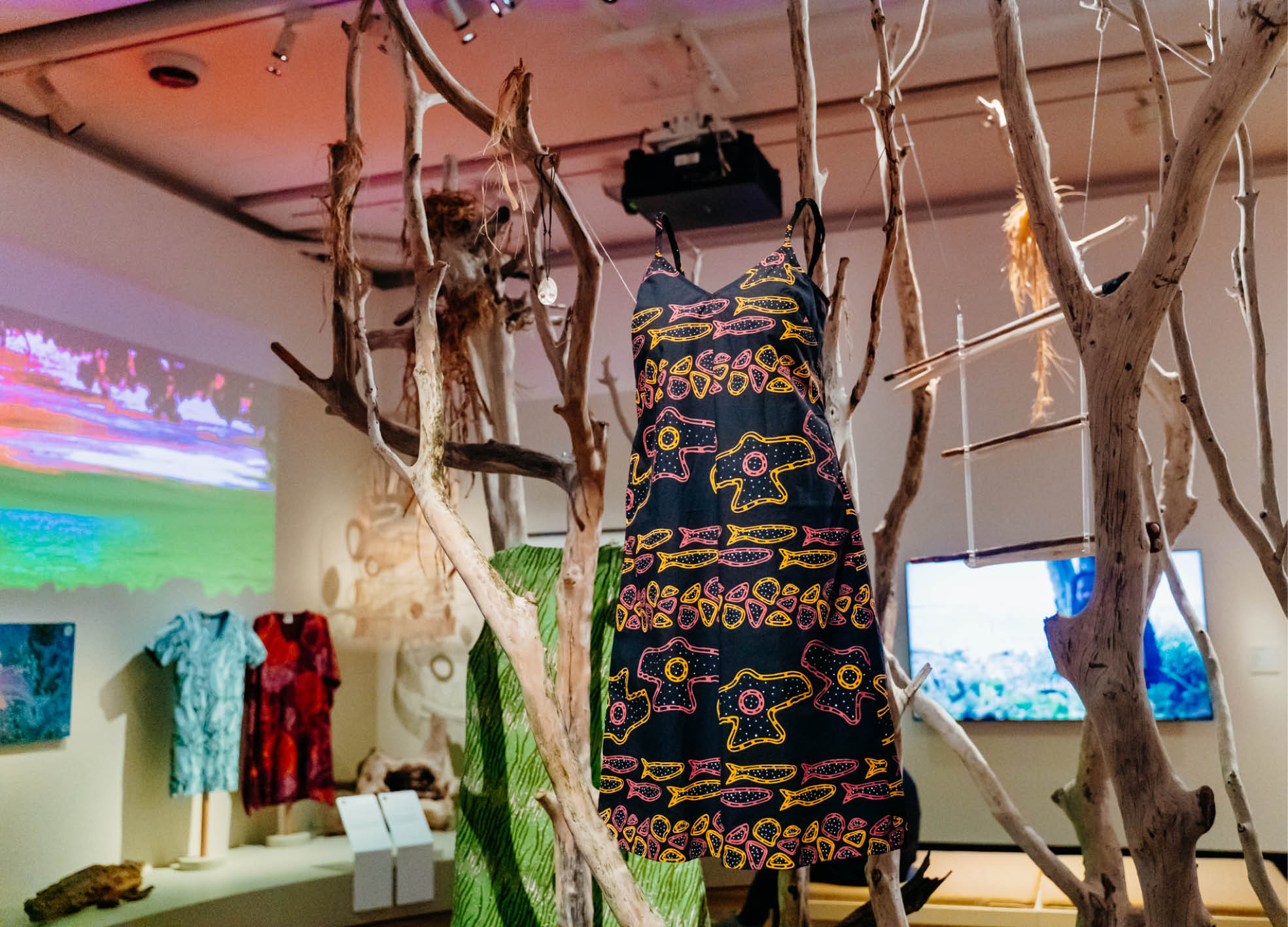It’s Cool to Be Kind

- Words by Peppermint
Happy World Kindness Day! On this delightful day, we’re throwing it back to a piece from Emiliana Simon-Thomas PHD – a researcher focused on kindness and compassion and its positive effect on the human brain. Back in Issue 26 of Peppermint, she took at look at the science of kindness – and how choosing to be kind can have a huge affect on our own wellbeing.
Kindness is something of a holy grail. In the required but informal “How to Survive Academia” seminar I went to in grad school at UC Berkeley, one professor explained that he was content with the work he’d done, he was most invested in teaching these days and that his most compelling advice was ‘Just Be Nice’. That stuck. In my view, taking the kind road at all the junctures we face every day is an incredible valuable, habit-forming exercise that can improve health and wellbeing for all of us.
Kind behaviours engage the systems in our brain that signal pleasure.
I became interested in the intersection of emotions and thinking as a result of working on a study that was trying to tie a particular pattern of brain activation to intelligence, as measured by a standard IQ test. I was testing people for this study, and despite the fact that we were not measuring it, I could see that peoples’ emotional states were having an impact on their cognitive performance. I went to graduate school to study this, drawn by a clinical population whose brain injuries led to a lack to emotional input to thinking and decision making – and who, despite performing well on IQ tests, are not able to function in society because of their impulsiveness, poor capacity to predict positive v negative outcomes, social ineptitude and other impairments. After looking closely at how negative emotional experience affected thinking during graduate school, I turned to positive and pro-social states (experiences that involve being interested in promoting the wellbeing of others) during my postdoctoral training. Frankly, it is so much more fun to study these, and they hold such promise for human flourishing on all levels, that I never looked back.

Kind behaviours engage the systems in our brain that signal pleasure. The same areas that respond to monetary awards or chocolate cake also come online when people give their own resources away in the service of others. Also, kindness in the context of caregiving and compassion engages areas of the brain that are involved in parental nurturance behaviours – and that use the neuropeptide Oxytocin. Oxytocin is associated with pleasurable social experiences and promotes feelings of trust and safety around others. Finally, kindness engages a part of the nervous system called the Vagus Nerve, which is purported to support social affiliation, personal contentment and emotional resilience.
Being tightly scheduled, busy busy busy, is a challenge to kindness because this promotes a more self-referential default mode of thinking.
There are many ways to measure the impact of kindness and happiness on a person’s life and wellbeing. First, we can look at happiness levels and see if they correlate with kindness. People that engage in more frequent acts of kindness score higher on measures of happiness, and it turns out that people who fall into the category of ‘Very Happy’ always have a strong network of friends and spend lots of time socialising. Presumably, this kind of life habit is more likely in people who are kinder. A second way is to look at how kind behaviours impact happiness – and this is the work of Elizabeth Dunn, who has showed that all over the world, the more ‘pro-social spending’ people do, the happier they are. Finally, a very recent study showed that in the elderly, service behaviours (volunteering) were associated with less vulnerability and shallower decline for dementia. The data overwhelmingly suggests that connecting with others in kind ways is decidedly good for health and wellbeing. At some level, kindness may involve some degree of what Kristin Neff calls Self-Compassion, which is a willingness to extend the same kind attitude that you are sharing with others towards yourself. In other words, like the oxygen mask in the airplane, yours needs to be on in order for you to be of use to anyone else.
Regrettably, one of the biggest challenges to kindness is not noticing, or being able to attend to opportunities to be kind in the world around us. One of the most famous studies in social psychology, the Good Samaritan study, showed that people who were in a rush, obliged by their feelings of being late to where they were going, opted not to help someone who was clearly suffering in their path. Being tightly scheduled, busy busy busy, is a challenge to kindness because this promotes a more self-referential default mode of thinking. Our nervous system, though absurdly computationally powerful, is also limited – and if all of our attention is consumed by self-focused issues – we’re simply not able to orient to the needs of anyone else. Another challenge is related to the devices we carry, which hijack our sense modalities so that we simply do not look up or listed to others in our vicinity, which again makes kindness a challenge. There are, of course, ways to use devices that don’t have this effect, but it takes some intentional tuning out of devices and being perceptually available.
Our basic potential for kindness should not live timidly under the shadow of our parallel potential for competition.
I think what science can provide is evidence that challenges a long held societal belief that kindness is somehow optional and meek – and only worth considering after one’s personal desires have been met. This ill-construed ‘survival of the fittest’ ethos always omits kindness as a source of fitness, focusing rather on brawn and capacity for sociopathic pursuit of power and success at the expense of others. Many sectors of American commerce in history, in fact, operated on this model – a small number of people attaining egregious success by exploiting the humanity of many. Today, it’s evident that the achievements associated with this kind of approach are typically short lived and have led to expensive, toxic downstream effects. With a non-partisan scientific explanation for kindness as a foundational value, the motivation for kindness does not have to come from one belief system or another, but can appeal across people for the benefit of everyone.
Science has provided me with more resolve – a stronger basis for the claims I make about why our basic potential for kindness should not live timidly under the shadow of our parallel potential for competition. Both are instrumental for survival – and often kindness gets us closer to our goals, faster and in a more sustainable way.
JOIN OUR MAILING LIST
Brighten up your inbox with our not-too-frequent emails featuring Peppermint-related news, events, competitions and more!
explore
More articles
It’s beginning to look a lot like Christmas…. Which means we are officially entering party season. Work parties, friend-dos, family get-togethers and then we’re straight into New Year festivities. If you’re lucky enough, you might be staring down the barrel…
Look, I don’t want to make anyone panic but IT’S DECEMBER!!! If you’re planning to give homemade gifts, you’re going to have to act fast. …
Furred, feathered, fishy, scaled… The pets we choose are as diverse as our personalities. (And apparently, quite often we resemble each other.) But they all…
When you hang a painting on a wall, the story stays put. But when you wear a beautifully made garment that may as well be…
Hang out with us on Instagram
Any New Year’s resolutions on your list? We love this from @OtterBeeStitching - “be brave enough to suck at something new”.
There’s no points for perfection, but you’ll get a trophy for trying. If nothing else this year, take the leap and try something new.
#OtterBeeStitching #Embroidery #BeBrave #TrySomethingNew #EmbroideryArt

Sunday serving suggestion ☀️
Gorgeous photos from @JolieFemmeStore - who make sweet garments from vintage bedsheets.
#PeppermintMagazine #SlowSunday #SwitchOff #Unplug #ReadAMagazine

A toast to the old you 🥂
We wholeheartedly love this post from the brilliant @EmilyOnLife:
“2026: Reinvent, burn it down, let it go (whatever it is). Year of the Snake it up. Exercise your boundaries, exercise your body, take one teeny step every day towards a life that feels better to be in.
But don’t you dare shit on your old self while you do it.
Hold yourself with reverence and tenderness and respect, because you got you this far. You did your very best with the information and tools you had at the time. You scraped yourself together, you made it work, you survived what felt impossible to survive: again and again and again.
You are perpetually in the process of becoming, whether you can feel it or not, whether or not you add it to your 2026 to-do list.“

Some very wise words from @Damon.Gameau to take us into 2026 🙌🏼

⭐️ We made it!!! ⭐️
Happy New Year, friends. To those who smashed their goals and achieved their dreams, and to those who are crawling over the finish line hoping to never speak of this year again (and everyone else in between): we made it. However you got here is enough. Be proud.
It’s been a tough year for many of us in small business, so here’s to a better year in 2026. We’re forever grateful for all your support and are jumping for joy to still be here bringing you creativity, kindness and community.
We’re also excited to be leaping into the NY with our special release sewing pattern – the Waratah Wrap Dress!
How great are our fabulous models: @Melt.Stitches, @KatieMakesADress and @Tricky.Pockets - and also our incredible Sewing Manager @Laura_The_Maker! 🙌🏼
Ok 2026: let’s do this. 💪🏼
#PeppermintWaratahWrapDress #PeppermintPatterns #SewingPattern #MeMade #WrapDress #WrapDressPattern

Putting together our annual Stitch Up brings on all the feels! We feel humbled that you’ve chosen to sew Peppermint patterns, we feel inspired by the versions you’ve created and we feel proud of you.
Where to begin?! As always, there has been a plethora of Peppermint patterns flooding our feeds this year, and we wish we could showcase more than just a handful of magnificent makes from you, our clever community. We encourage you to flip through the me-made items in your wardrobe or scroll through your grid and remind yourself of the beauty you’ve created with your own two hands (and maybe a seam ripper and some choice words). Congratulations to all of us for our creative achievements this year!
We’ve put together some (but absolutely not all) of our favourites from 2025 over on our website. We hope it inspires your next make!
🪡 Link in bio 🪡
Pictured: @FrocksAndFrouFrou @MazzlesMakes @KatieMakesADress @_Marueli_ @IUsedToBeACurtain @Nanalevine.Couture @PiperInFullColour @MadeByMeJessieB @SarahMalkawi @Made.By.Little.Mama
#PeppermintPatterns #SewingPatterns #MeMade #MeMadeEveryday

















